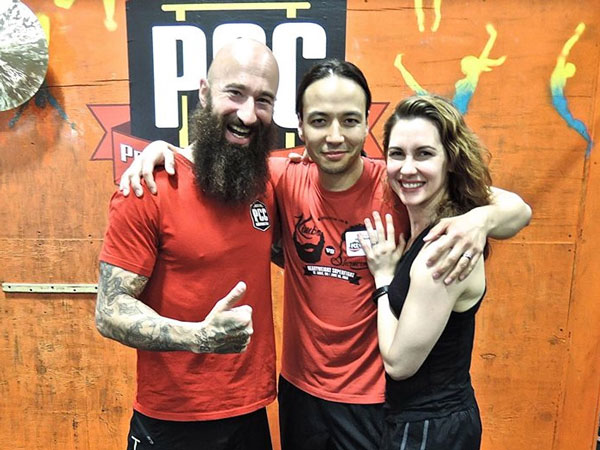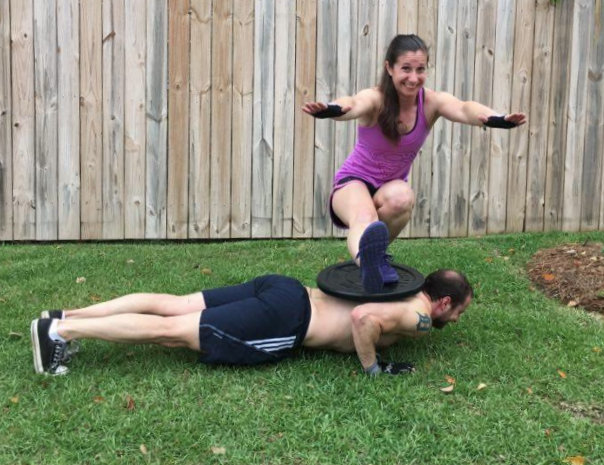
“Hey Honey, let’s quit!”
That’s what I said to my wife today about two minutes into the workout we were doing together.
She looked at me incredulously and said, “No!”
Well, back to push-ups, pull-ups and squats for me.
Once we finished the workout, I was glad I’d chosen to train with my wife. Usually, I’m the one to push her, but today I needed some encouragement.
Let me back up just a bit. I love to workout. It’s one of the biggest pleasures in my life. Not only do I love to workout–but I love bodyweight workouts. I love all kinds of push-ups, pull-ups, muscle-ups and levers. Sometimes I wish I could make working out my entire life–but already I have a career that I love.
I’m a physician–a psychiatrist. A busy psychiatrist. I run an inpatient service and I recently started an outpatient practice as well. I am on call every 3rd week for 7 days straight. It’s a lot of work. There are nights I don’t get any sleep. Sometimes that makes it hard to stick to my training. Thankfully I’ve found a few ways to help keep myself in check.
Here’s how I’ve been able to do it:
Plan your workout schedule to correspond with your workload: I know that I’m on call every 3 weeks. That call is 24/7 and it lasts 7 days. Ugh! That week that I’m on call it’s REALLY hard to workout. By the end of the week, I’m dog tired and getting in my workouts is almost impossible. Instead of giving up completely, I now treat that week as a deload week. I plan to work out really hard the first two weeks. I do the majority of my strength work, longer workouts, more intense workouts those two weeks and I rest more and do shorter workouts during the call week. I also don’t expect myself to perform as well when I’m on call so I don’t beat myself up if I’m not where I want to be. You can do it too. Have an upcoming project at your job or a busy season? How about a cyclical business? Plan your workouts accordingly.
Let others motivate you: Sure it’s great to work out alone. I do enjoy that. Typically, I can design my own workouts, I can motivate myself to do them at a fairly high intensity, and I enjoy the solitude of listening to my favorite music (heavy metal and gangsta rap) while getting it in. Sometimes though–when things are busy I can’t quiet that nagging part of my mind–the part that tells me I’m too tired to do this. The part that asks, “Wouldn’t it be nice to have a chocolate sundae and watch TV?” This is why I work out with my wife. We motivate each other. It’s good to have her there right with me. Other days, I leave the house and go to the gym. I get motivated by working out with my friends. There’s something that brings out the best in you if there’s a bit of friendly competition in your workouts.
Animal motivation: I love dogs. I have 4 of them. I have VERY active dogs. My dogs need walks. They need play time. On days when I’m too tired for an intense workout, I take them for long walks. Sometimes I even take them for a run. If you have a pet, they need exercise too, so you’re helping them and you’re helping you!

Learn a sport: Every Friday evening, I go to the local gymnastics gym for a private session with my awesome gymnastics coach. There’s nothing like paying an instructor, coach or fitness professional to motivate you. There are plenty of times I feel tired on the drive over–but once I’m there I’m happy and engaged with the learning process and I always leave feeling happy I went. Starting to learn gymnastics at the age of 40 was a humbling experience as well. I’m the oldest person in the gym by sometimes 30+ years and the young gymnasts are amazing. Sometimes, I just stop and watch. I’m astounded by what the young gymnasts can do. Watching them encourages me to push myself to get better.
Eat well: I’ll admit it, this one is kinda hard. When I’m really busy with work and I’m not sleeping well, I crave sugar. I crave chocolate. I have a hard time saying no to sweets and processed foods when I’m stressed. I know this about myself. I justify eating a cookie or having a couple glasses of wine at night because I’m tired. I worked hard, I deserve it. Sound familiar? I know I’m not the only one. I noticed that after leaving my old job and starting my new practice, I was eating worse. I was gaining a little weight, and I wasn’t feeling as motivated. I recently doubled down on my eating. I haven’t been allowing myself to give in to the thought, “I deserve this.” I also have a trip to Cancun coming up that motivated me to get back on track with eating. I feel better, my workouts are better, and my energy is better. Not only that–my abs are back and that keeps me happy! A lot of people find temporary motivation in an upcoming trip, a wedding, the summer. The trick is, I think, to keep coming up with motivating ideas. Once you’re married–don’t become complacent. Once you’re back from your trip or once the summer ends don’t stop all the positive changes you made. Keep coming up with reasons to eat better and pretty soon it will become habit and habit is harder to change.
Take a day off: What? Isn’t this supposed to be about motivation to work out? Yes. Yes, it is. Sometimes, the best thing I’ve ever done for myself is to take a day off or even two. Come back refreshed. Come back when all your muscles are rested. I promise, you won’t lose all your gains in two days. In fact, once you’ve rested your overworked muscles and your mind–you will come back stronger than ever. I’ve had some of my best PR’s after 2-4 days of rest. If work has been killing you–don’t go and kill yourself even more in the gym. The body can only handle so much stress. If you’re in overdrive all the time–something is going to go wrong.
Have fun: Workouts don’t have to be stressful. They don’t have to be long. They don’t have to leave you gasping for air. I know there’s something you’re good at. Everyone has something they can do well, even if it’s simply walking. Indulge it once a week. Indulge it briefly every day. Anytime you’re moving that’s good. There will be time for working on weaknesses, getting stronger, and building muscle, but some days you just need motivation. You need the spark that’s going to get you going. Go ahead and do it if you love it. Even if you did it yesterday or this morning or 5 minutes ago. Something is ALWAYS better than nothing.
Sign up for the PCC: Making the commitment to take the PCC was one of the best things I ever did to enhance my training motivation. Once I was signed up, I knew there was no backing out. I also knew that if I wanted to make the most of the weekend, I would need to practice my calisthenics regularly in the months leading up to the event. When PCC weekend came around, I was able to try new things and learn new skills because I had built a proper foundation.
I hope this list helps inspire you to find ways around your busy schedule. Even if you don’t do it exactly how I do it–I’d love to hear the ways you motivate yourself when life throws you that curve ball!
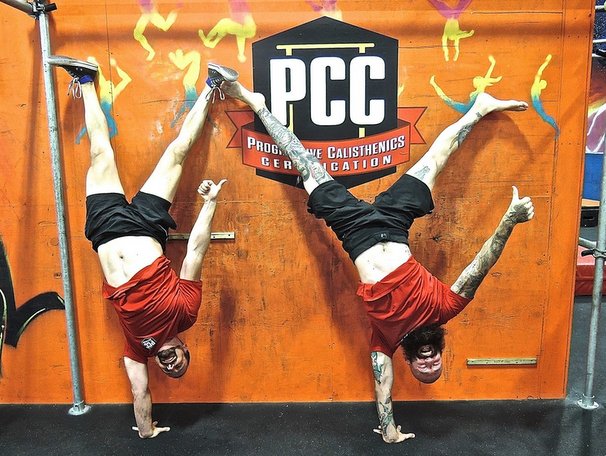
****
Brad Sadler, MD, MS, PCC is a full-time psychiatrist and avid fitness enthusiast. He loves spending time with his family, and practicing calisthenics.
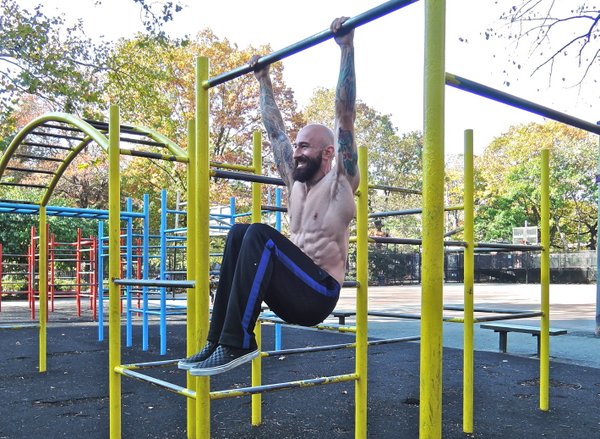 I get a lot of questions from potential PCC candidates about our
I get a lot of questions from potential PCC candidates about our 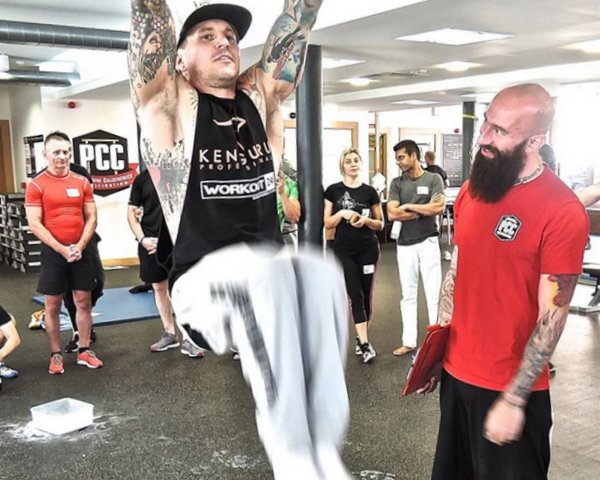 The first few times I taught the
The first few times I taught the 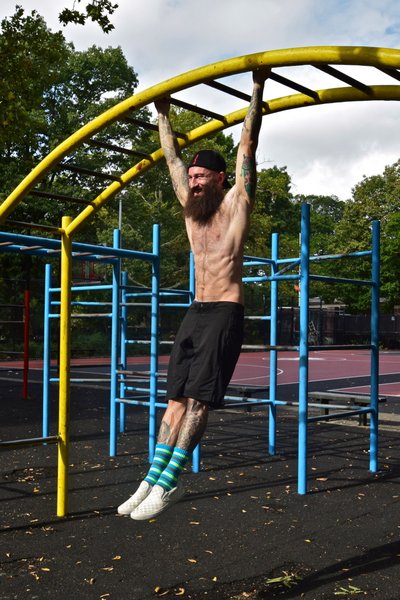 Focus on raising your knees with control as well. Avoid moving too quickly and aim to pause briefly at the top of each repetition to make sure that you remain steady.
Focus on raising your knees with control as well. Avoid moving too quickly and aim to pause briefly at the top of each repetition to make sure that you remain steady.

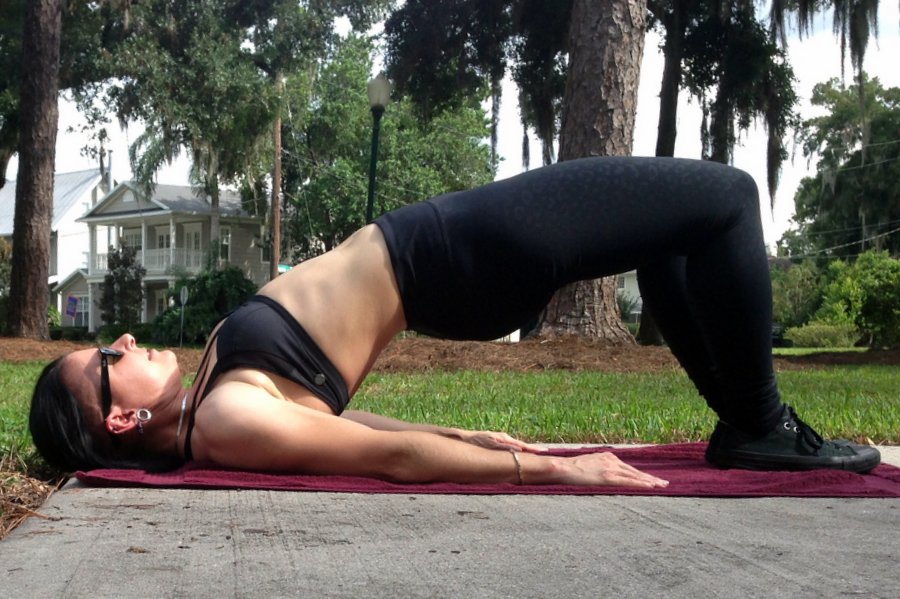
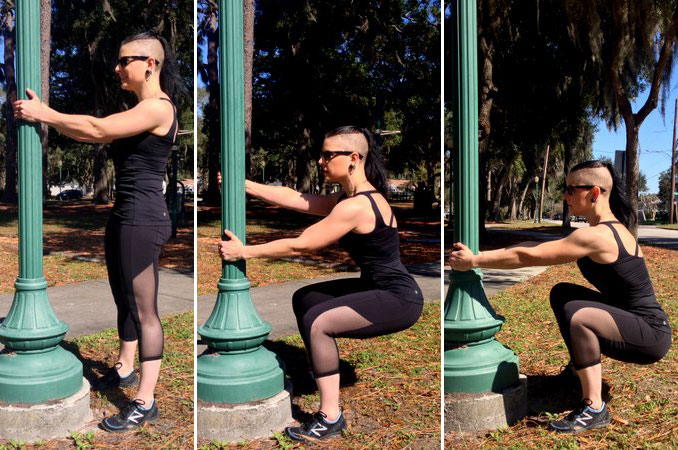
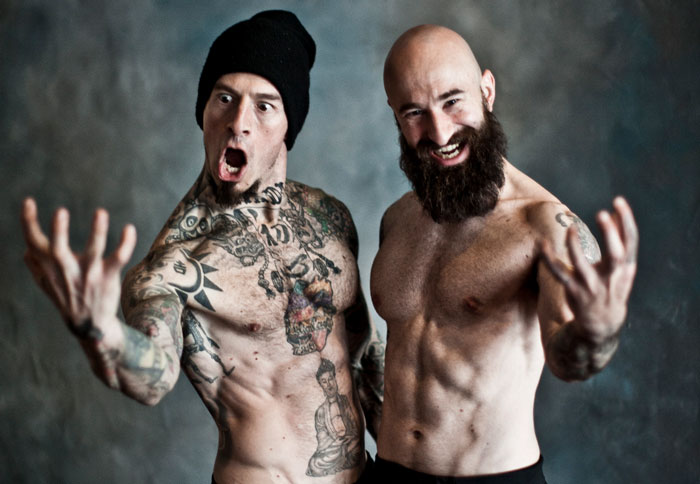

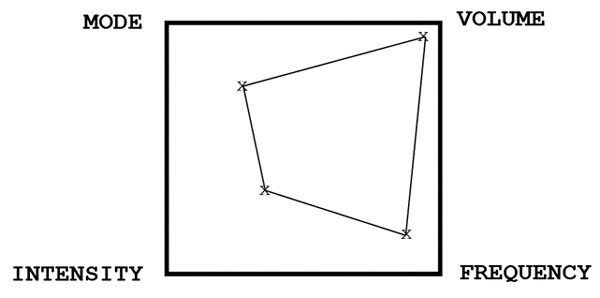
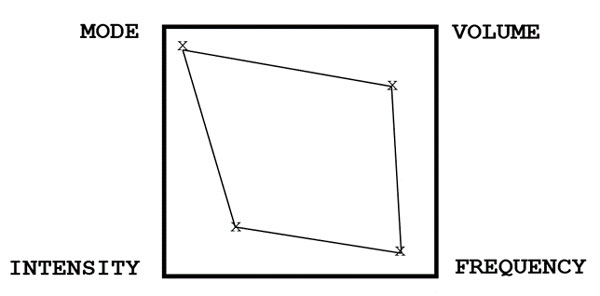

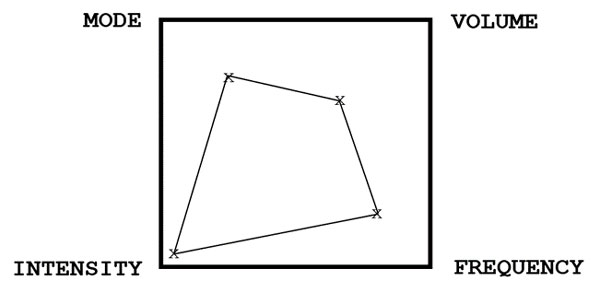
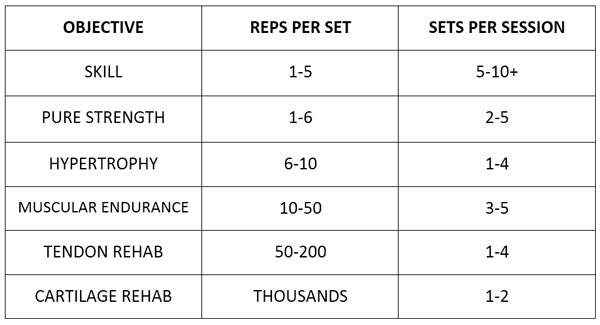
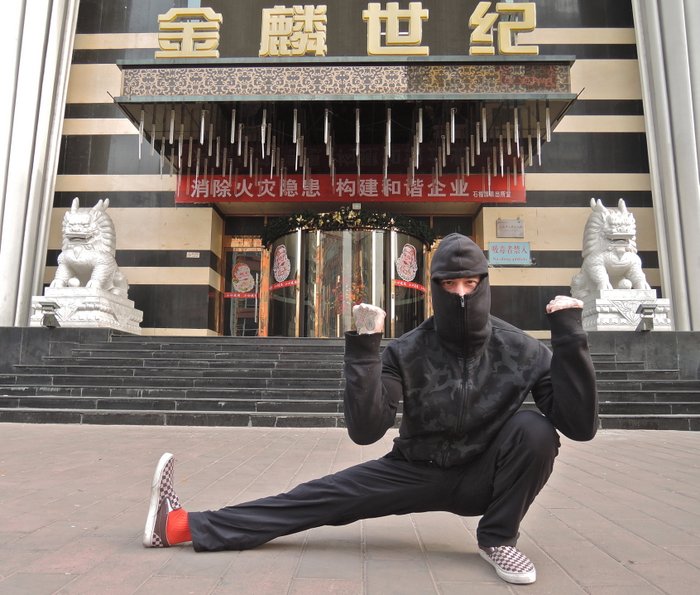
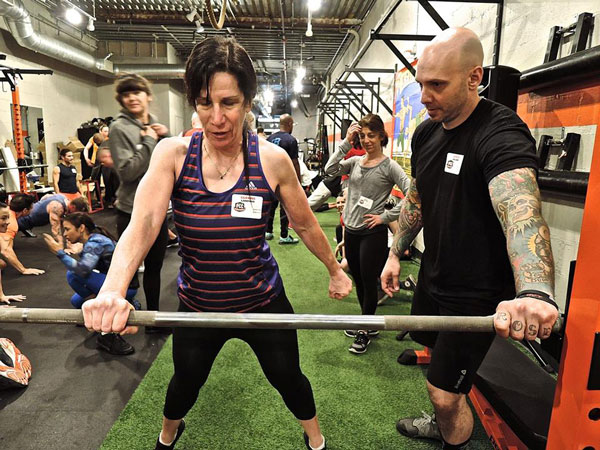
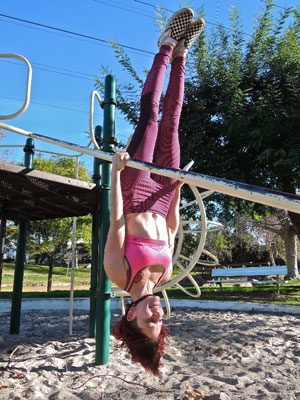

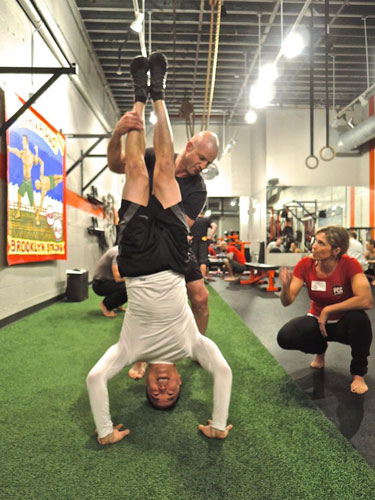
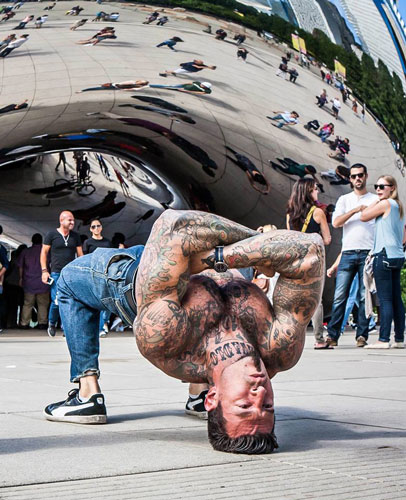

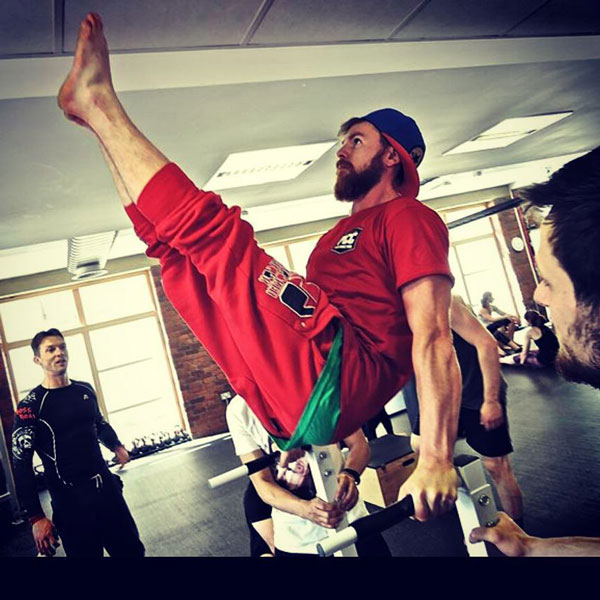
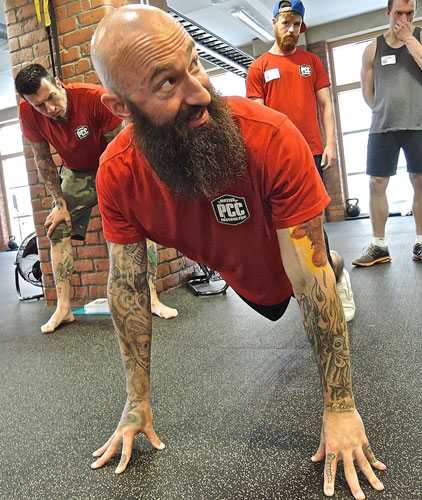
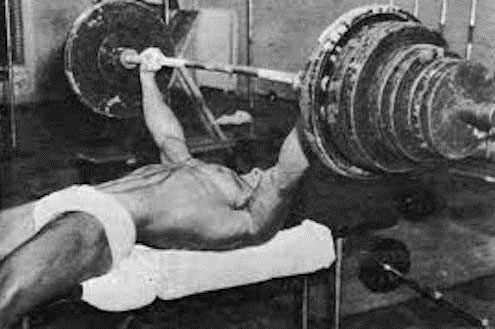
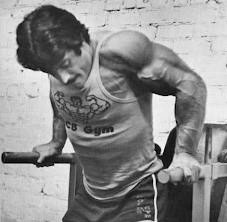 The king of High Intensity Training was Mike Mentzer. He shocked the training world with his one-set-to-failure philosophy, and he practiced what he preached. It was hard to argue with those results, either: back in ‘78 he was the first ever bodybuilder to win the Mr Universe with a perfect score. Many in the know also thought he was the winner of the highly controversial 1980 Mr Olympia, which was actually taken by a well out-of-shape Arnold S., who entered as a last minute contestant.
The king of High Intensity Training was Mike Mentzer. He shocked the training world with his one-set-to-failure philosophy, and he practiced what he preached. It was hard to argue with those results, either: back in ‘78 he was the first ever bodybuilder to win the Mr Universe with a perfect score. Many in the know also thought he was the winner of the highly controversial 1980 Mr Olympia, which was actually taken by a well out-of-shape Arnold S., who entered as a last minute contestant.
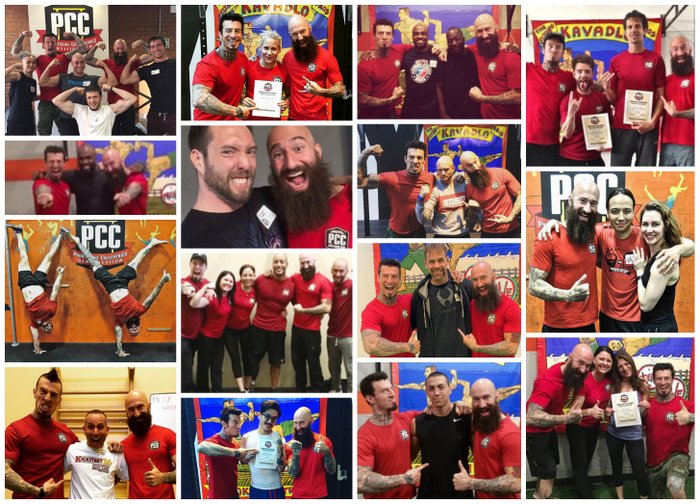 What a great year it has been for calisthenics and the PCC! Danny and I traveled all over the US and Europe in 2015, bringing the Progressive Calisthenics Certification to new places like
What a great year it has been for calisthenics and the PCC! Danny and I traveled all over the US and Europe in 2015, bringing the Progressive Calisthenics Certification to new places like 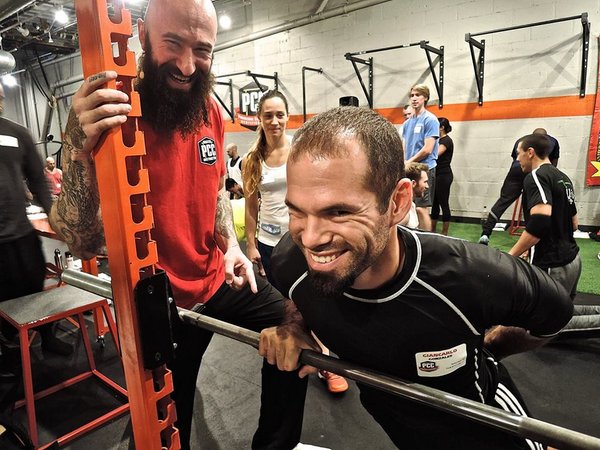 –It’s always an honor to get a blog post from a calisthenics legend like PCC Instructor
–It’s always an honor to get a blog post from a calisthenics legend like PCC Instructor 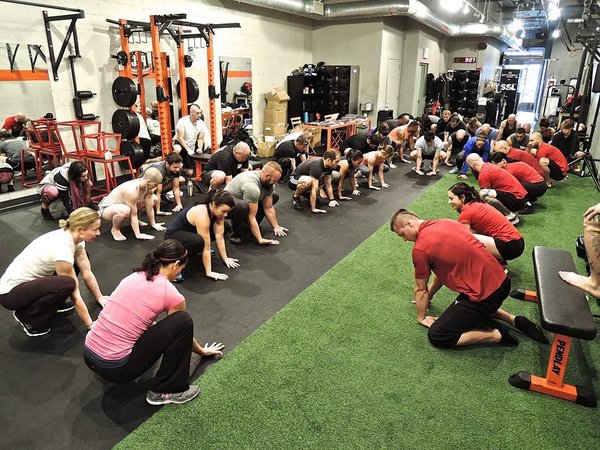 –My wife and fellow PCC Instructor Grace Kavadlo penned this helpful
–My wife and fellow PCC Instructor Grace Kavadlo penned this helpful 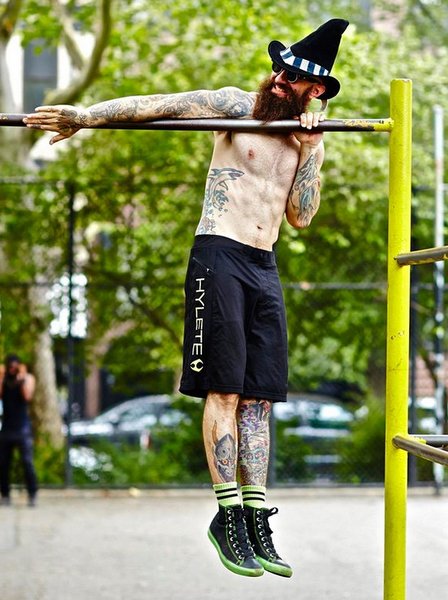
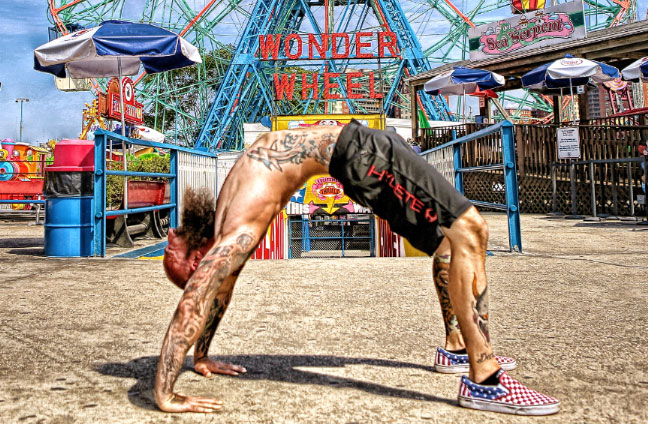
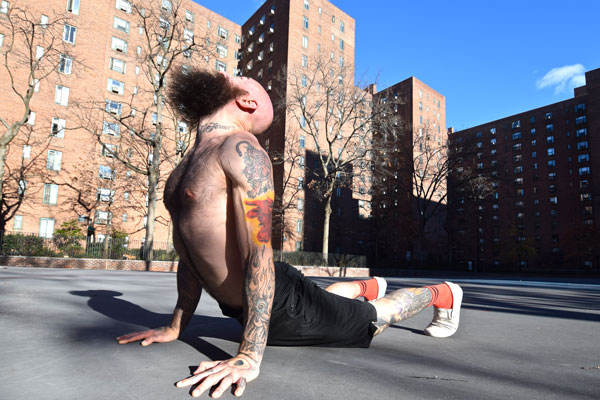

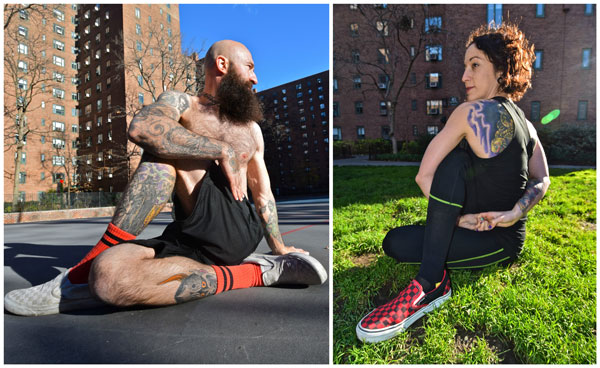
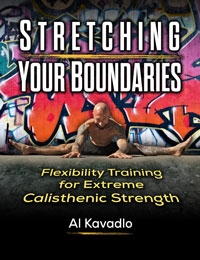
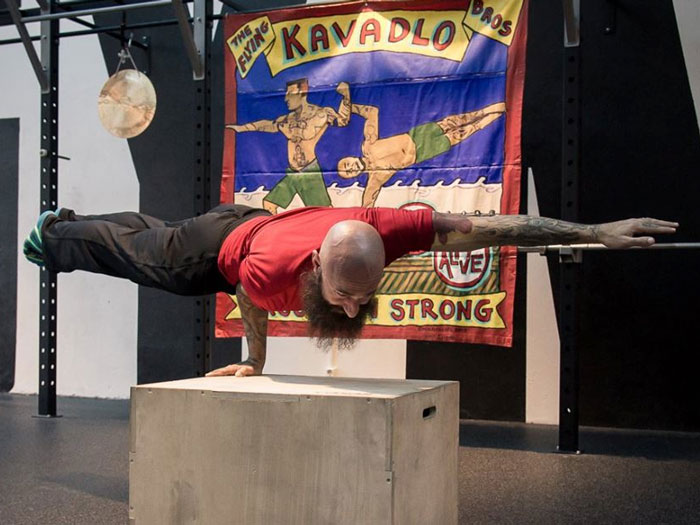 If you look around most mainstream gyms, you’re likely to see people using fancy-looking machines to try hitting each part of their bodies individually. This “isolation principle” of weight training gained popularity with the rise of bodybuilding, where it is effective in sculpting individual muscles in isolation and hoping to counterbalance that effort with each muscle individually, putting them together in a “Frankenstein” fashion to build a muscular physique.
If you look around most mainstream gyms, you’re likely to see people using fancy-looking machines to try hitting each part of their bodies individually. This “isolation principle” of weight training gained popularity with the rise of bodybuilding, where it is effective in sculpting individual muscles in isolation and hoping to counterbalance that effort with each muscle individually, putting them together in a “Frankenstein” fashion to build a muscular physique.

 Joseph A. Schwartz, DC has 31 years experience as a practicing chiropractor with an emphasis on neurology, rehabilitation, nutrition, strength and conditioning. His mission is to empower others so they may exceed their expectations for vibrant health and well-being.
Joseph A. Schwartz, DC has 31 years experience as a practicing chiropractor with an emphasis on neurology, rehabilitation, nutrition, strength and conditioning. His mission is to empower others so they may exceed their expectations for vibrant health and well-being.
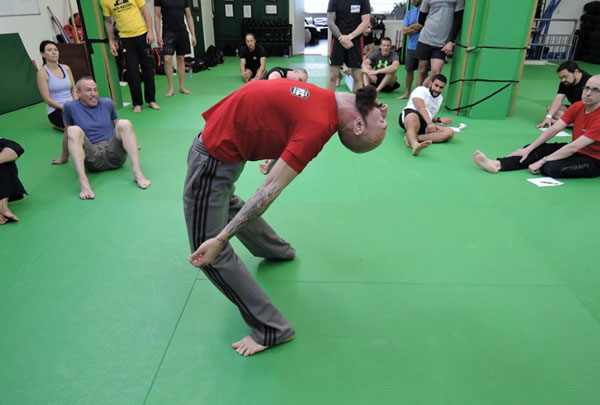
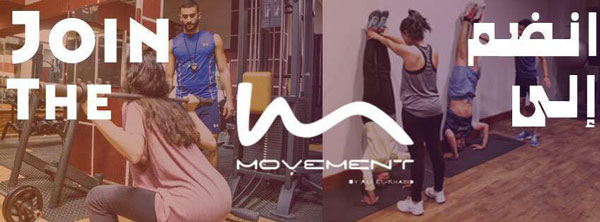
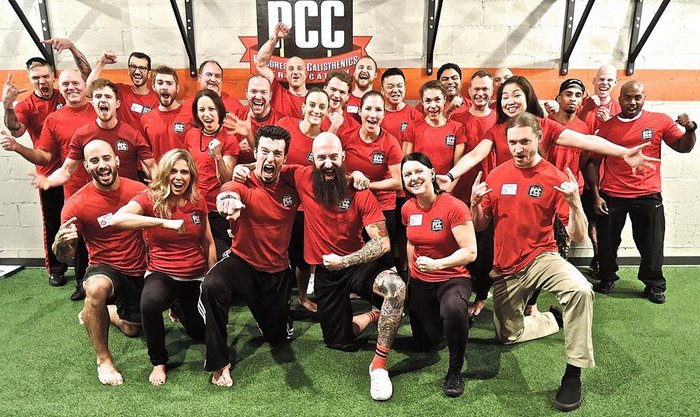

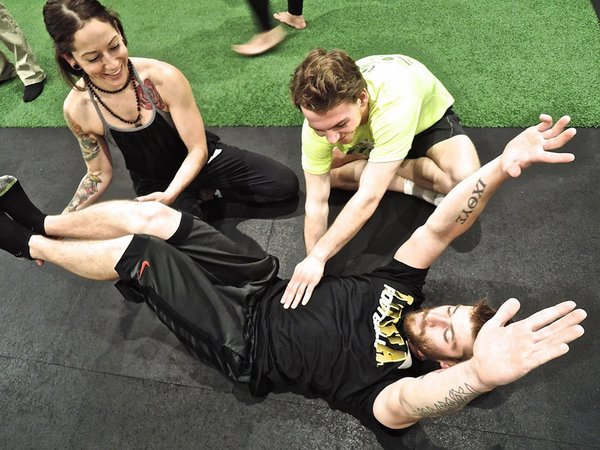

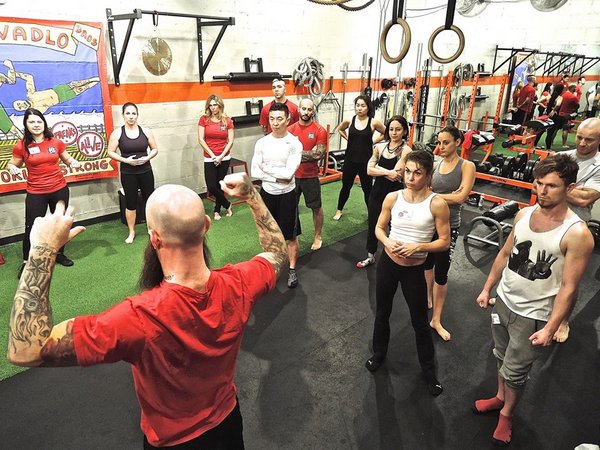
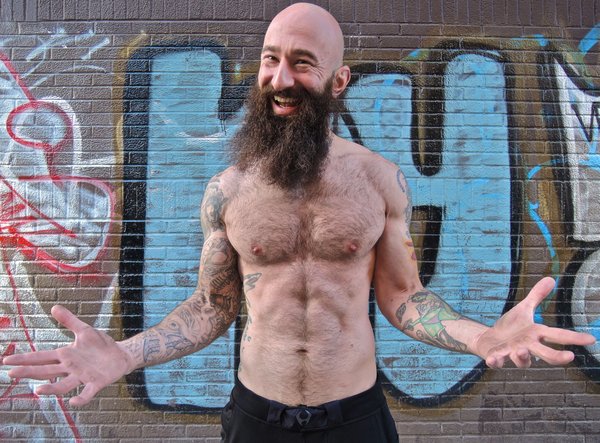

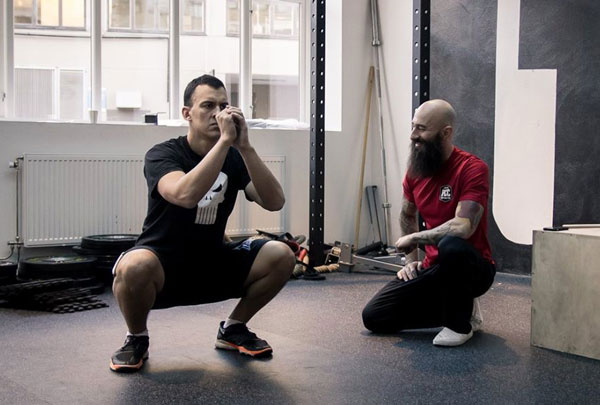 Position check:
Position check: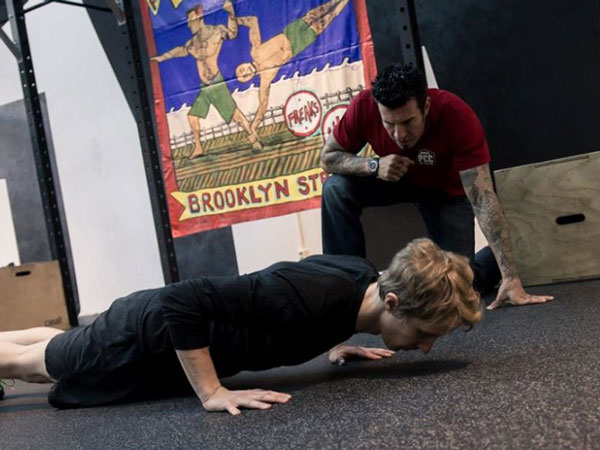 Position Check:
Position Check: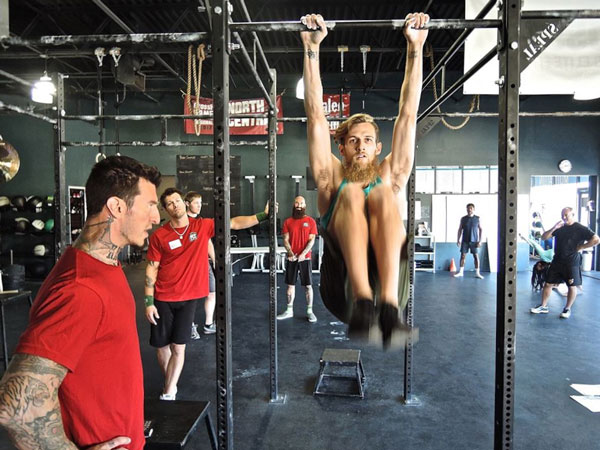 Position Check:
Position Check: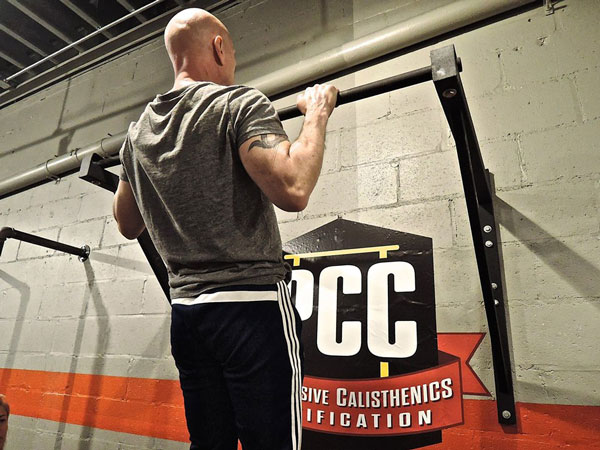 Position Check:
Position Check: